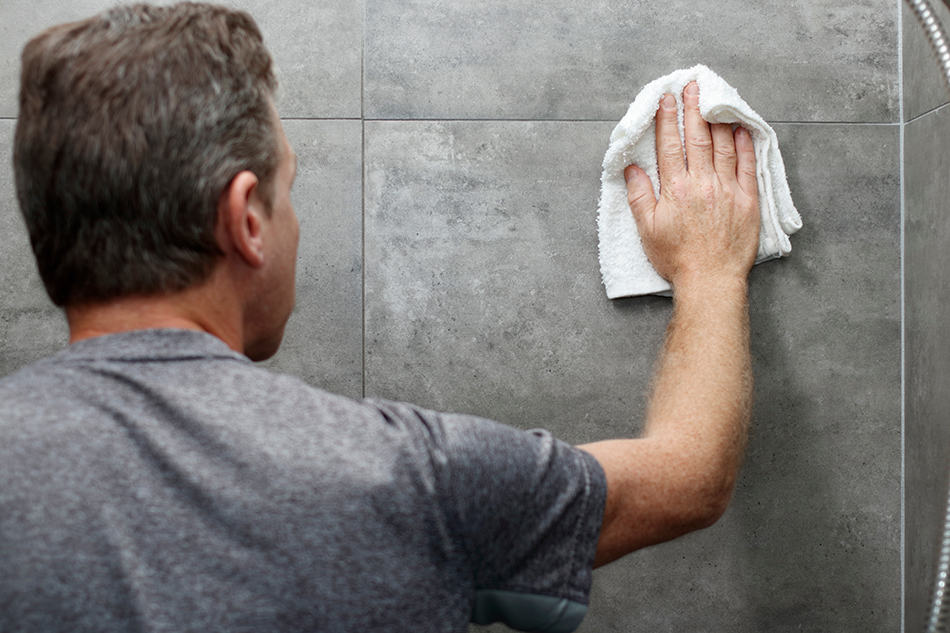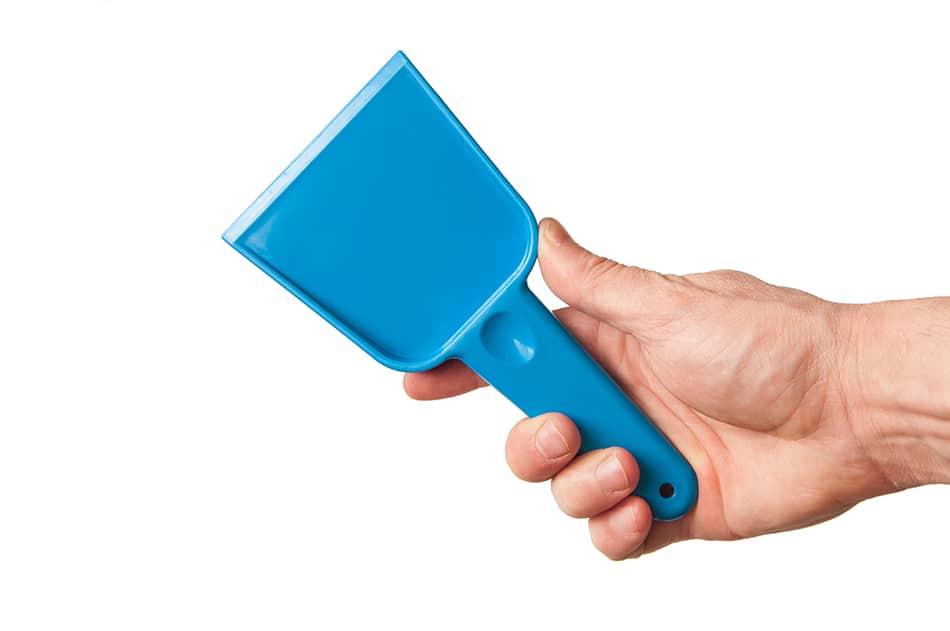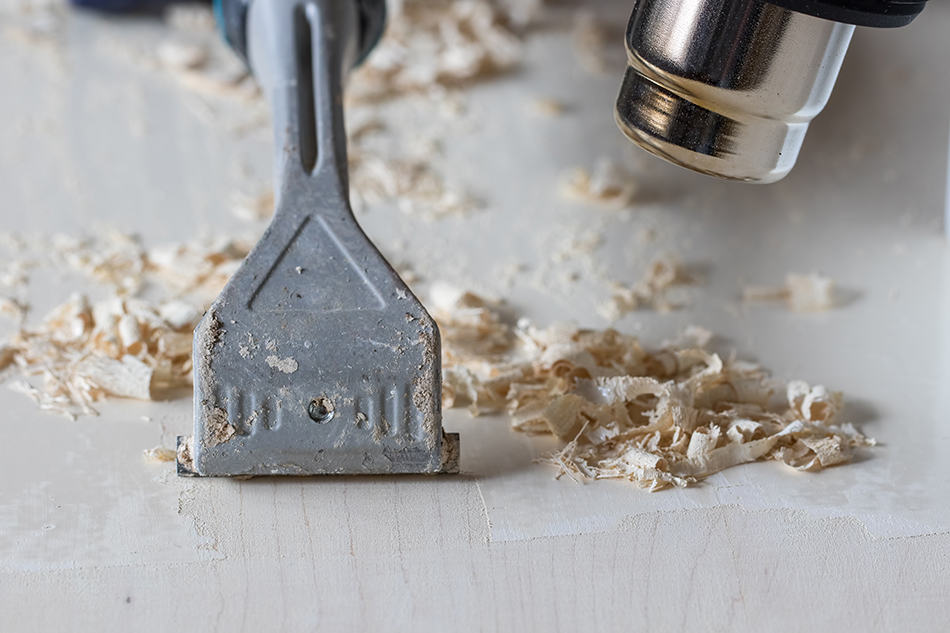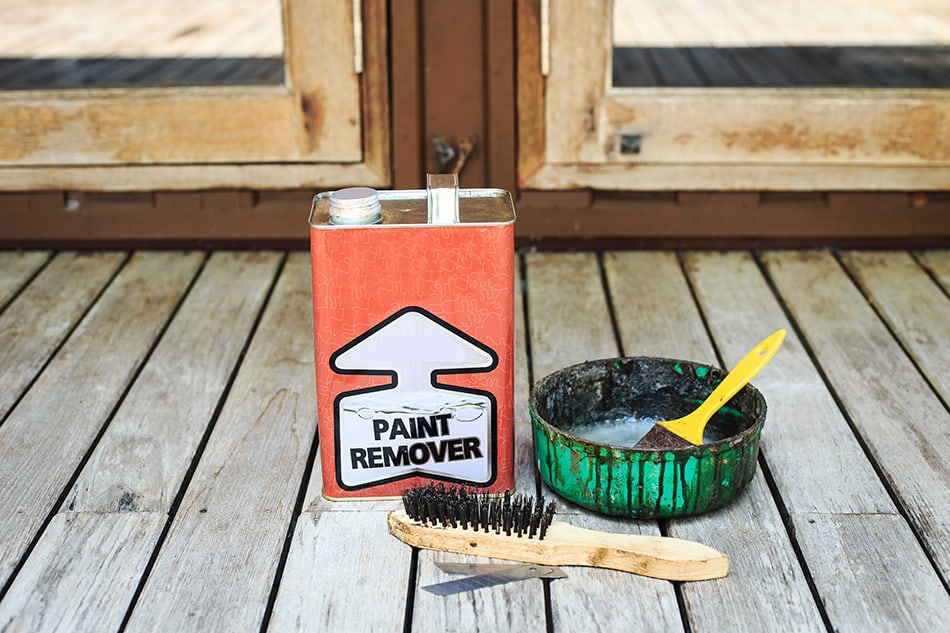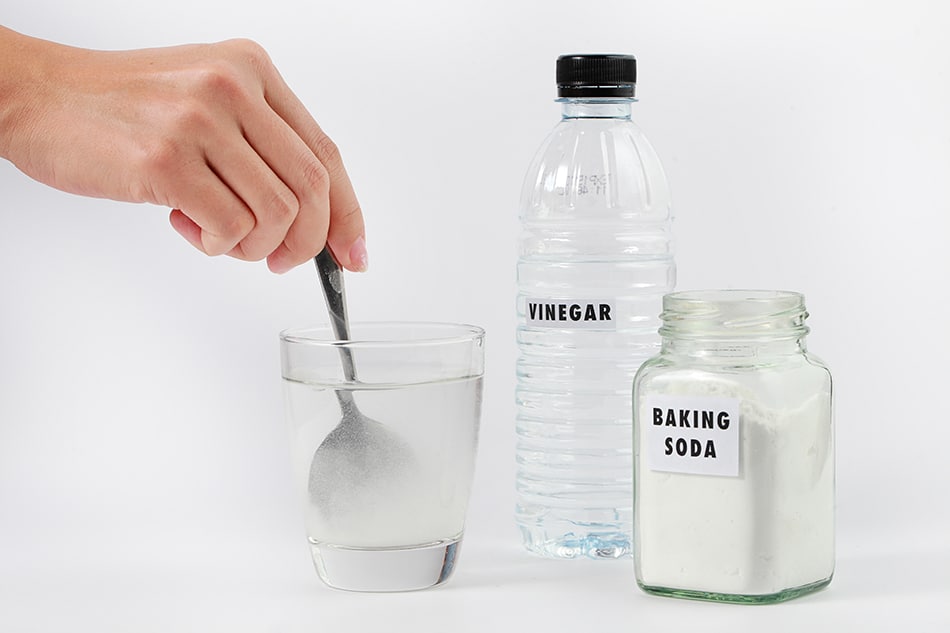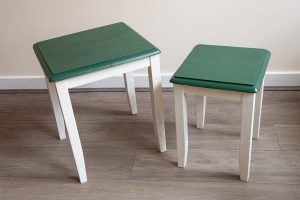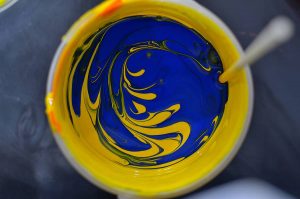When you’re painting bathroom walls, the paint will inevitably spill or splatter on the floor, which results in an unpleasant view. Unfortunately, removing paint on tiles can be a challenging task, especially if it has already dried.
The good news is that there are several ways to get rid of paint on tiles. Plus, most of the methods can be used on almost all kinds of tiles.
However, you need to be careful when removing paint on glazed tiles so that you won’t damage them. So, how do you remove paint from tiles?
Immediately Clean Wet or Fresh Paint
As mentioned, removing dry paint on tiles can be challenging. As such, it is recommended to immediately clean wet or fresh paint.
When cleaning fresh paint, you’ll need a damp sponge or cloth, dishwashing soap, and a solvent (thinner or alcohol).
Once you have all the things you need, you can start by soaking the sponge or cloth in water and wring it, then wipe off the paint using the damp cloth. When wiping the paint, you should rinse the sponge or cloth from time to time, especially when it is saturated with paint.
If the tiles still have some paint, the next step is to apply a solvent. Keep in mind that the solvent you need to use will vary, depending on the type of paint. For instance, if you’re removing oil-based paint like enamel paint, it is recommended to use alcohol, thinner, or mineral spirit. If you’re removing water-based paint, it is enough to use dishwashing soap and water.
Once you’ve removed the paint, you can rinse the cloth or sponge and the solvent on the tiles with warm water.
When removing wet paint, you must use non-abrasive materials to avoid damaging your tiles. Some abrasive materials are steel scouring cloths, wool pads, and cleaners with ammonia.
Scrape Dry Paint
When the paint has already dried, you can remove it by scraping it. This method is also suitable if the paint is already chipping or peeling on its own.
Keep in mind that metal objects can damage your tiles. For this reason, it is best to use a plastic scraper or knife. Aside from that, you’ll also need a damp cloth, soap, water, dust mask, and utility knife for this method.
Always remember that you’re going to remove paint, which contains hazardous chemicals. As such, you have to protect yourself by wearing a dust mask. Once everything is set, you can start by doing a patch test.
Remember, a plastic scraper can still damage your tiles. If you notice the glaze of your tiles is flaking off, you need to choose another method to remove the dry paint.
If the glaze of your tile is intact, you can continue scraping until the paint is completely removed. Afterward, you can get rid of the remaining residue by wiping it off with a damp cloth, soap, and water.
Heat and Scrape Dry Paint
One method that will allow you to remove paint without damaging your tiles is to heat the paint before scraping.
For this method, you’ll need a pair of rubber gloves, a heat gun, a plastic scraper, a utility knife, and a damp cloth.
To soften the paint, you’ll need to use a heat gun. While heating the paint, you should make sure that you move the heat gun back and forth until the paint softens.
Once the paint is soft and loose, you can now start scraping. To begin, hold the plastic scraper at a 45-degree angle, then scrape the paint from the outer edges going toward the center.
When scraping, you must do it gently to avoid chipping the tile. Additionally, you also need to wipe down the surface that you’re scraping with a damp cloth. Doing this will ensure that you properly removed all the paint before going on to the next portion of the tiles.
Because you’re going to soften the paint in this method, you must wear a dust mask to avoid inhaling hazardous fumes. Also, it is recommended to open your windows to ensure proper air circulation.
Use a Commercial Paint Remover or Thinner
A commercial paint remover may cost you some money, but it is the fastest and most effective way to remove paint on tiles. Keep in mind that commercial paint removers contain harsh chemicals. Most tiles can withstand these chemicals; however, tiles with a soft glaze will be damaged if you use commercial paint remover. As such, this method is not suitable for soft-glazed tiles.
When buying a commercial paint remover, it is best to show the hardware attendant a sample of your tiles. That way, he can recommend a safe yet effective product you can use. If you don’t have a sample, you can choose a citrus-based paint remover to avoid damaging your tiles.
Aside from a commercial paint remover, you’ll also need a pair of rubber gloves, safety goggles, a plastic scraper, two clothes, soap, and a dust mask for this method. Always remember that you’re dealing with chemicals, so you need to wear a dust mask to avoid inhaling hazardous fumes.
To start this method, you can by cleaning the tiles, then apply a generous amount of commercial paint remover. Make sure to test the paint remover first on a hidden area. Afterward, let the paint remover sit for a couple of minutes. You can use the approximate time stated in the product manual.
The next step is to scrape the paint. In doing this step, you have to make sure that you’re holding the plastic scraper at a 45-degree angle. From there, you can wipe the surface with a damp cloth to remove any residue. Finally, the last step is to dry the tiles with a dry cloth.
Use a Natural Paint Remover
As mentioned, you’ll need to use a natural paint remover if you’re going to remove paint on soft-glazed tiles. Don’t worry; making a natural solution is simple. You can do this by mixing an equal ratio of white vinegar and water. You can also boil the vinegar solution to make it more effective. Adding baking soda to the mixture will also enhance its effectiveness.
Once you’ve made the solution, soak a cloth in the solution, then place the cloth on the surface of the painted tile. Afterward, gently scrub the tile with a soft brush. Remember, you should keep the vinegar solution hot for effective results.
Important Tips to Remember
When removing paint on tiles, you must take safety precautions. For example, you should always make sure that the room is well-ventilated, especially if you’re going to use commercial paint remover or thinner. Aside from keeping your doors and windows open, you can also use a fan to ensure proper air circulation.
Aside from proper ventilation, you should also protect yourself by wearing a dust mask, safety goggles, and a pair of rubber gloves.
One of the most essential tools to remove paint on tiles is your utility knife. As such, you have to make sure its blade is clean and sharp to avoid damaging your tiles. Additionally, you should wipe off the paint on the blade’s surface to get maximum coverage.
When scraping the paint, it is best to do it as gently as possible to avoid damaging your tiles. Afterward, you can use soap and water to remove any remaining residues. You also need to use another cloth to dry the tiles. Also, you should make sure that the tiles are clean before removing the paint.
When buying a commercial paint remover, it is advisable to consult the hardware attendant to ensure that you’re getting the best product. Remember, commercial paint removers are best suited for tiles with hard glaze. If you have soft-glazed tiles, it is recommended to use a natural solution.
Finally, you should not forget the grout. It is the rough and porous filler that joins the tiles together. Unfortunately, removing paint on the grout can be challenging, especially if it is not sealed very well.
Typically, you can clean discolored grout by using a toothbrush and alcohol or thinner; however, you have to remove the discolored grout and apply a new one if you can’t remove the discoloration.
Conclusion
Always remember that all painting projects will eventually cause paint spills or splatters on the floor or tiles. The good news is that you can get rid of the paint, especially if it is wet or fresh.
As presented, fresh paint can be easily removed with soap, water, solvent, and cloth. If the paint has already dried, it is still possible to get rid of it, but it will take some time and effort. Even so, using the abovementioned methods is still better than replacing your tiles.
